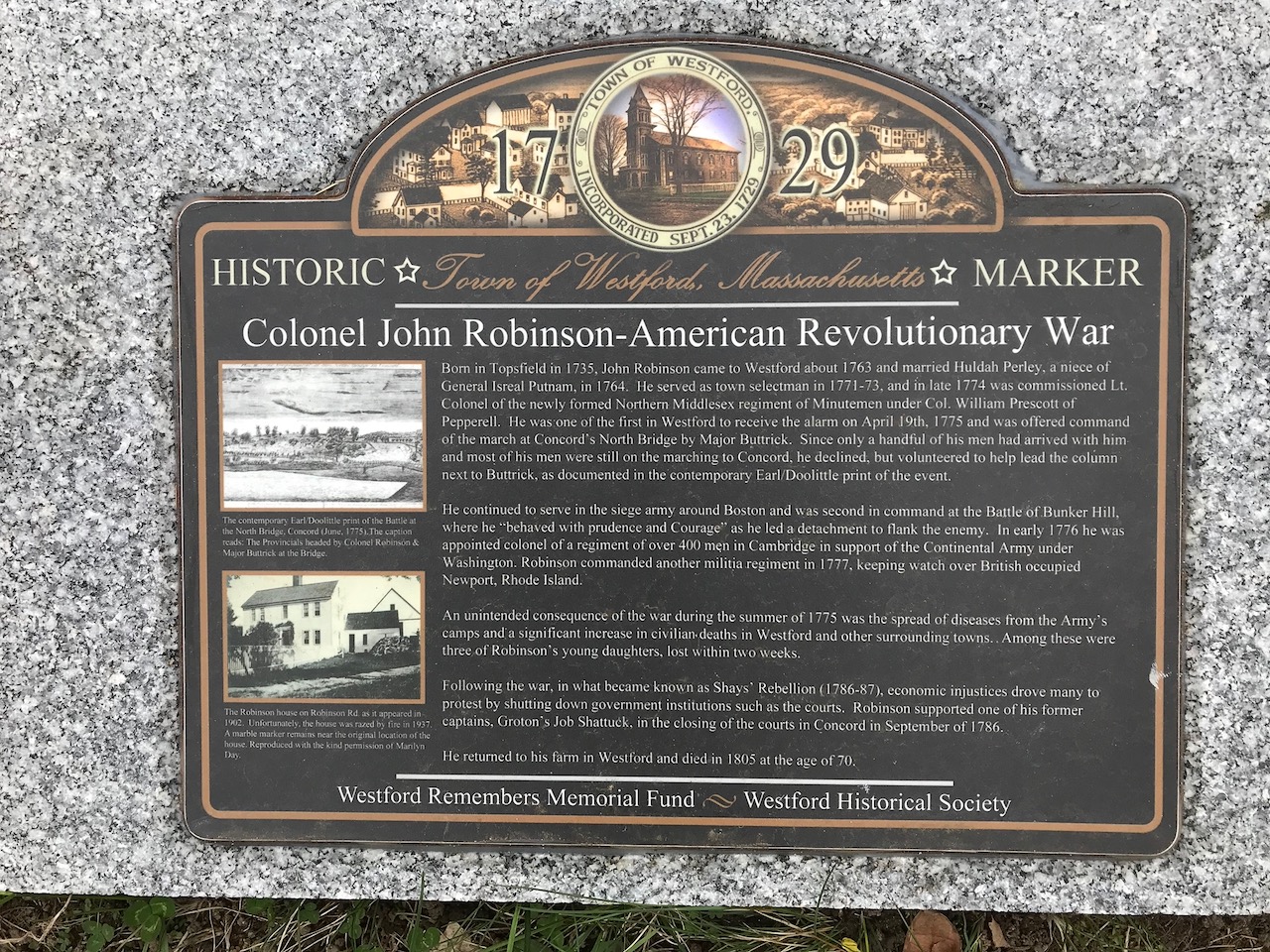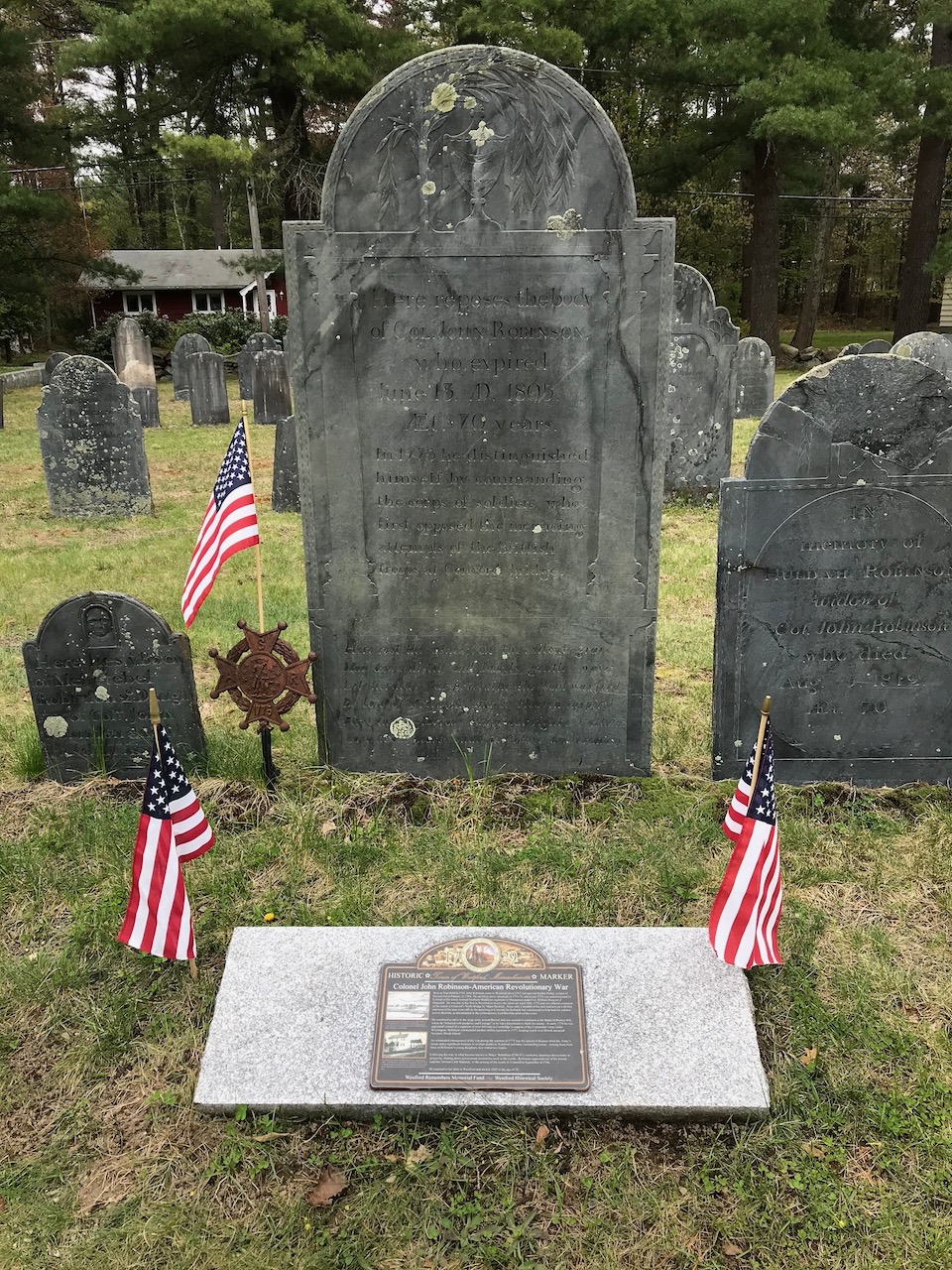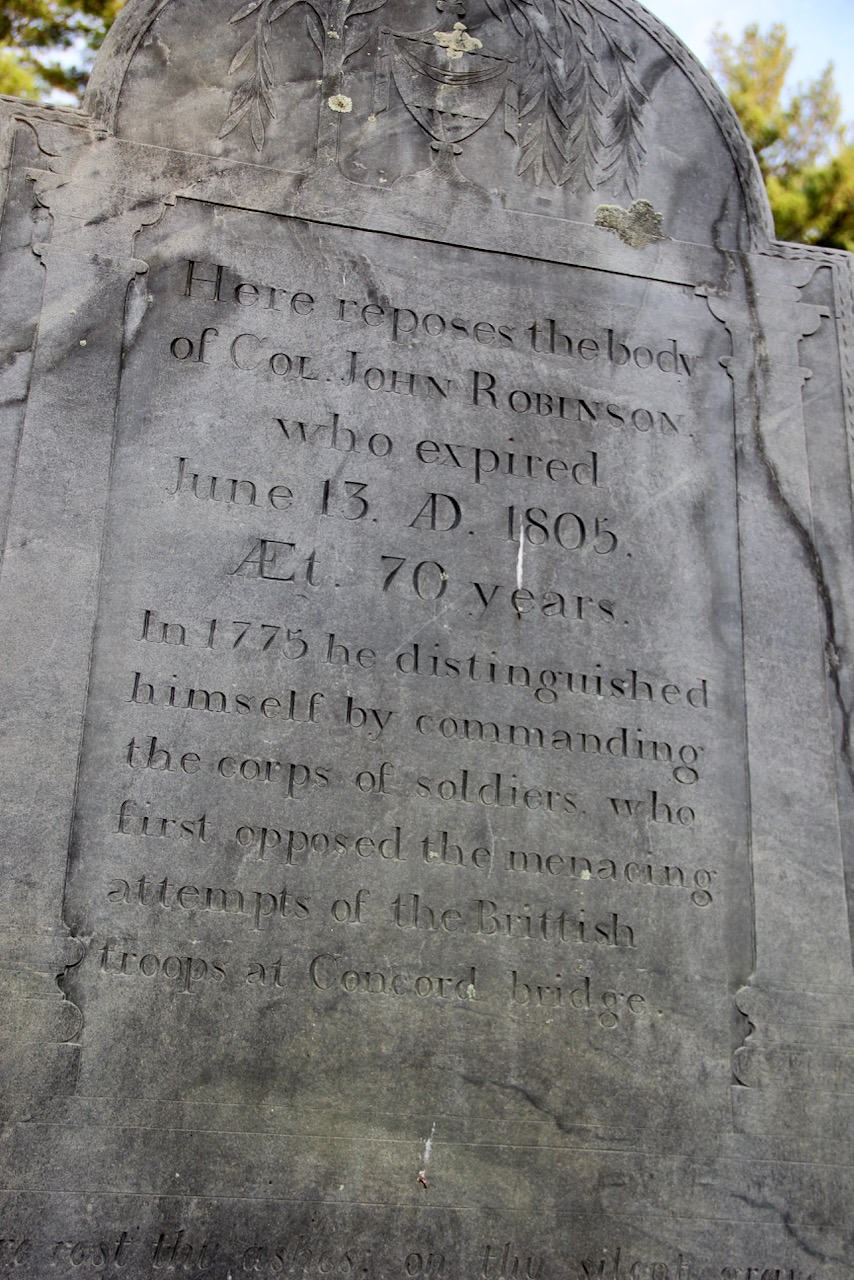In 2019, the Westford Remembers Memorial Fund and the Westford Historical Society dedicated a historical marker at the headstone of Colonel John Robinson in Westlawn Cemetery, recognizing his service to the country as one of Westford’s prominent Patriots. The marker is one of many erected throughout the community with support from Westford Remembers, a group formed to honor Westford’s past through the preservation of monuments and memorials.
When the alarm came to warn of the British advance on Lexington and Concord on April 19, 1775, Robinson was a lieutenant colonel commanding a company of the Westford Minute Men. Robinson did not fight with his own regiment at the North Bridge that day, but he did indeed fight.
The exact course of events remains unclear, but it seems the majority of Robinson’s regiment had only just begun to reach Concord by the time the first shots were fired. Only Robinson and a handful of other Westford men arrived with enough time to participate in the skirmish. Without a full company to command, Robinson approached another officer, Major John Buttrick, to find a place within his regiment. According to an early history of the event written by Reverend Dr. Erza Ripley, Major Buttrick offered the command of his men to Robinson. Despite being the more senior officer, Robinson declined, instead marching with Buttrick as a volunteer in his company.
According to other traditions—as well as his own headstone—Robinson is credited with commanding troops at the bridge. Whatever the case may be, he distinguished himself at the battle, just as he had during the French and Indian Wars and continued to do throughout the Revolutionary War. Following his participation on April 19th, Robinson served at the Battle of Bunker Hill and the Siege of Boston.
While his achievements in battle helped Robinson become a colonel with his own regiment, the advancement was accompanied by personal tragedy. By the summer of 1775, a devastating sickness spread among the soldiers and their nearby families. Three of Robinson’s daughters succumbed to illness: Sarah and Betty Robinson, ages 3 and 5 respectively, both passed on August 30, 1775, and 8-year-old Mehitable Robinson died on September 9th, only a few days later.
Following the Revolution, Robinson participated in Shays’ Rebellion, the infamous 1786–1787 uprising that took place in western and central Massachusetts.
His headstone reads:
Here reposes the body
of COL. JOHN ROBINSON
who expired
June 13, AD, 1805,
Æt, 70 years.
In 1775 he distinguished
himself by commanding
the corps of soldiers who
first opposed the menacing
attempts of the Brittish
troops at Concord bridge.
The marker reads:
Colonel John Robinson–American Revolutionary War
Born in Topsfield in 1735, John Robinson came to Westford about 1763 and married Huldah Perley, a niece of General Isreal (sic.) Putnam, in 1764. He served as town selectman in 1771-73, and in late 1774 was commissioned Lt. Colonel of the newly formed Northern Middlesex regiment of Minutemen under Col. William Prescott of Pepperell. He was one of the first in Westford to receive the alarm on April 19th, 1775 and was offered command of the march at Concord’s North Bridge by Major Buttrick. Since only a handful of his men had arrived with him and most of his men were still on the march[ing] to Concord, he declined, but volunteered to help lead the column next to Buttrick, as documented in the contemporary Earl/Doolittle print of the event.
He continued to serve in the siege army around Boston and was second in command at the Battle of Bunker Hill, where he “behaved with prudence and Courage” as he led a detachment to flank the enemy. In early 1776 he was appointed colonel of a regiment of over 400 men in Cambridge in support of the Continental Army under Washington. Robinson commanded another militia regiment in 1777, keeping watch over British occupied Newport, Rhode Island.
An unintended consequence of war during the summer of 1775 was the spread of diseases from the Army’s camps and a significant increase in civilian deaths in Westford and other surrounding towns. Among these were three of Robinson’s young daughters, lost within two weeks.
Following the war, in what became known as Shays’ Rebellion (1786-87), economic injustices drove many to protest by shutting down government institutions such as the courts. Robinson supported one of his former captains, Groton’s Job Shattuck, in the closing of the courts in Concord in September of 1786.
He returned to his farm in Westford and died in 1805 at the age of 70.




